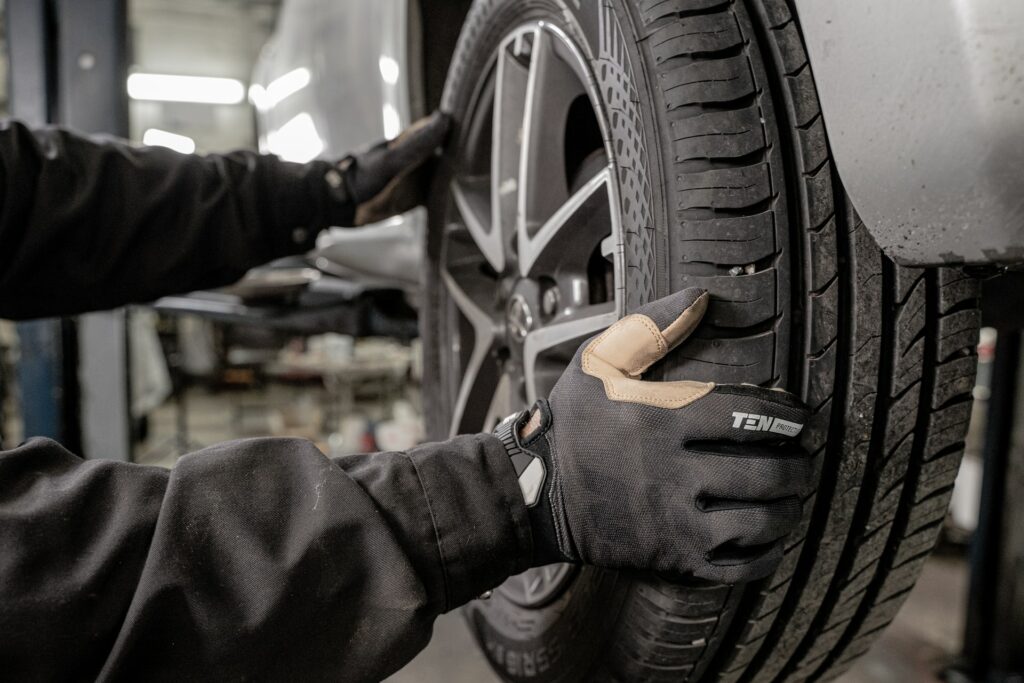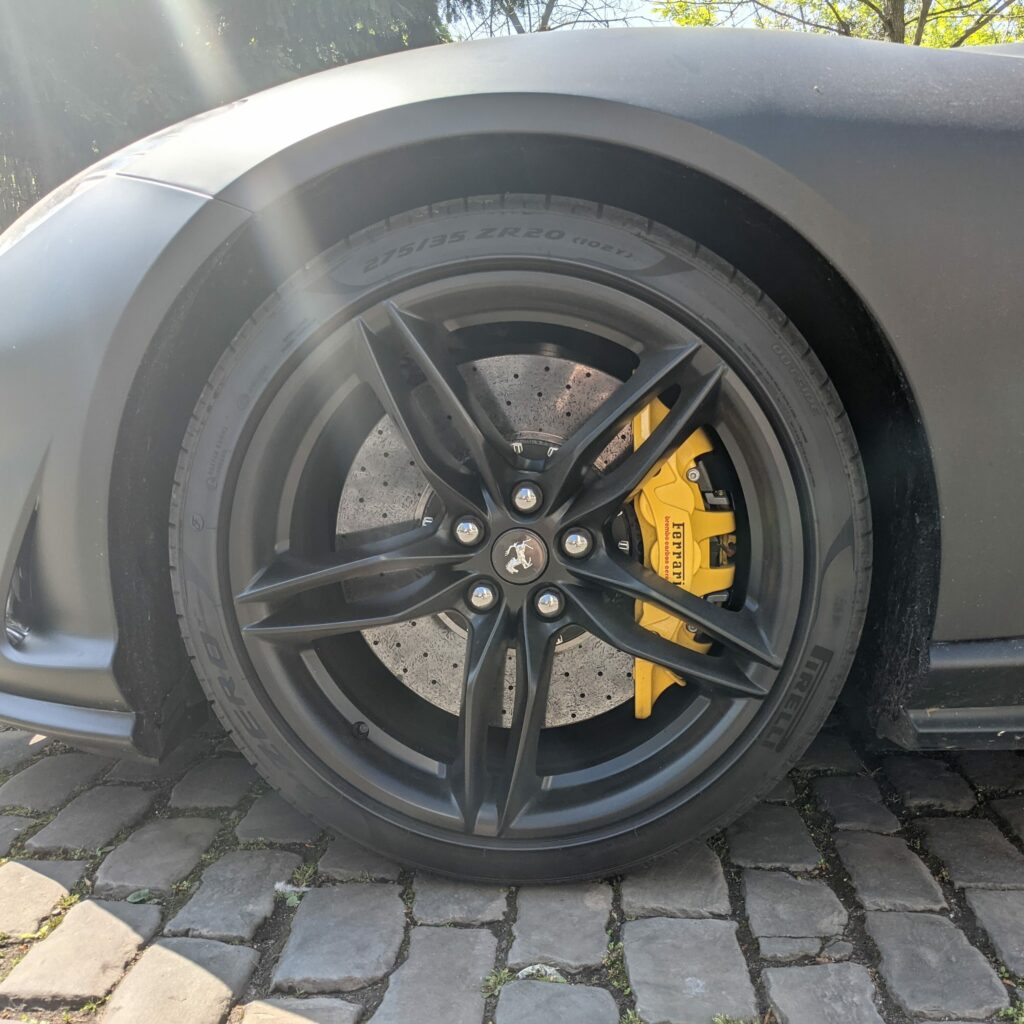Despite all of the latest advancements in automotive safety technology, your tires remain the most important safety feature on your car. After all, those few inches of the contact patches are literally the only part of your car that touches the road.

So, it is vital to learn more about tires so that you know how to choose the right ones for your car and how to maintain them so that they can help keep you safe.
The choice for tires can be both very simplistic as well as very advanced. The most basic idea of tires is that any set of rounded rubber will do as long as it fits onto your wheel.
But, you should also consider your environment as well as your own preferences.
Tire science has made some impressive advancements recently, especially in computer modeling, materials, and compounds. The end result is an engineering marvel that provides you with the best rubber on the road for virtually every occasion and driving style.
It is comforting to know that you have access to such advanced tires on the market, so now you just need to figure out which ones are most suitable for you based on your car, climate, and preferences for handling versus comfort.
Summer vs Winter vs All-Season Tires

Let’s start with a detailed breakdown on the differences between summer, winter, and all-season tires.
Summer tires are specifically engineered to operate optimally in warm weather. They offer excellent traction and strong steering feedback in both dry and wet weather – but only when temperatures are above a certain point. Most tire manufacturers state that summer tires are best utilized when temperatures are 40 degrees Fahrenheit or above. After that point, their softer compound becomes much stiffer, which can greatly impact their ability to handle.
On the other hand, winter tires are made to provide grip in snowy and slushy conditions. They generally have deeper treads to help better manage traction on cold, wet roads and don’t degrade in their performance as the temperature dips below the freezing point.

Meanwhile, all-season tires try to offer the best of both worlds and are able to operate in warm weather as well as in relatively cold temperatures. We say relatively cold since they are also only usually effective until 40 degrees Fahrenheit.
That means that they also make compromises at both ends – all-season tires are not as grippy and performance-oriented as true summer tires in the heat and are not as strong in the snow as winter tires.
But, this compromise means that you can have just one tire throughout the year if you live in a climate that doesn’t get a lot of snow or cold weather, which represents the majority of the US.
So, what situations should you consider an all-season tire versus a dedicated set of both summer and winter tires?
For those who live in places like New York or the Midwest, you may only see snow about 10 to 20 days out of the year. If you choose to drive sparingly or not at all during those types of days, then an all-season tire may be sufficient for your needs.
But, if you live in a place like the northern parts of the US or Canada where snow can be on the ground from November to March, then you likely would want a separate set of snow tires and summer tires.
Some provinces in Canada and countries like Germany and Sweden even make snow tires mandatory during the winter. Currently, there are no regulations in any US state that make snow tires mandatory.
Therefore, you may be wondering why would you ever want the hassle and cost of using two sets of tires in the US if it is not compulsory?
First, it is for your safety. A winter tire will undoubtedly perform better in cold conditions than an all-season tire. That can mean shorter braking distances and improved handling in snowy and icy conditions.
Second, it is a myth that a set of summer tires and a set of winter tires costs more than just one set of all-season tires.
Although it is true that the initial cost of buying two sets of tires is more than the one set, the summer and winter tires will only put on half the mileage as the all-season tires since they are only used for half of the year each.
If you drive 12,000 miles a year, the all-season tires would accumulate all 12,000 miles, while the summer and winter tires would split the mileage and only get 6,000 miles each.
Therefore, the all-season tires will need to be replaced at double the rate of the summer and winter pair, which means that you would spend roughly the same amount in either case.
How Much Should I Spend on Tires?

You should generally be replacing all four of your tires at once. A quality tire from a trusted brand usually runs around $100-$200 each, so expect to spend about $400 to $800 for a set of four new tires.
If you find prices that are significantly less than this range, then it may be the case of something being too good to be true. Yes, you may be able to find discounted tires for less, but be aware and check if they are actually new and not used or refurbished.
We do not recommend buying used tires since there is no reliable way to know the history of their usage.
If you own a specialty car like a sports car or an SUV with large wheels, prepare to spend a bit more. It is not uncommon to spend over $1,000 on ultra-performance tires or for rims with 20 inch+ diameters.
How Long Do Tires Last?
A normal set of tires that aren’t driven to the extreme should last for about 40,000 to 60,000 miles these days.
But, you may want to replace your tires before they even wear out just based on their age. Most experts advocate replacing new tires after six years regardless of their treadlife.
Therefore, if you drive fewer than 10,000 miles each year, you should consider switching out your tires based on time instead of wear.
How Often Should I Rotate My Tires?
To optimize the life of your tires, you should consider rotating them every 3,000 to 5,000 miles. This frequent rotation allows all your tires to wear more evenly since the drive wheels will wear at a different rate than the non-drive wheels.
For example, the tires on a front-wheel drive car will experience more stress and therefore more wear compared to the back tires.
The Ultimate Tire Guide – Summary
We hope that this guide has given you the insights you need to make the right choice for your next set of tires.
This is an area of your life where a good investment will go a long way as a quality set of tires will help keep you safe and provide you with the performance you need in each season.
